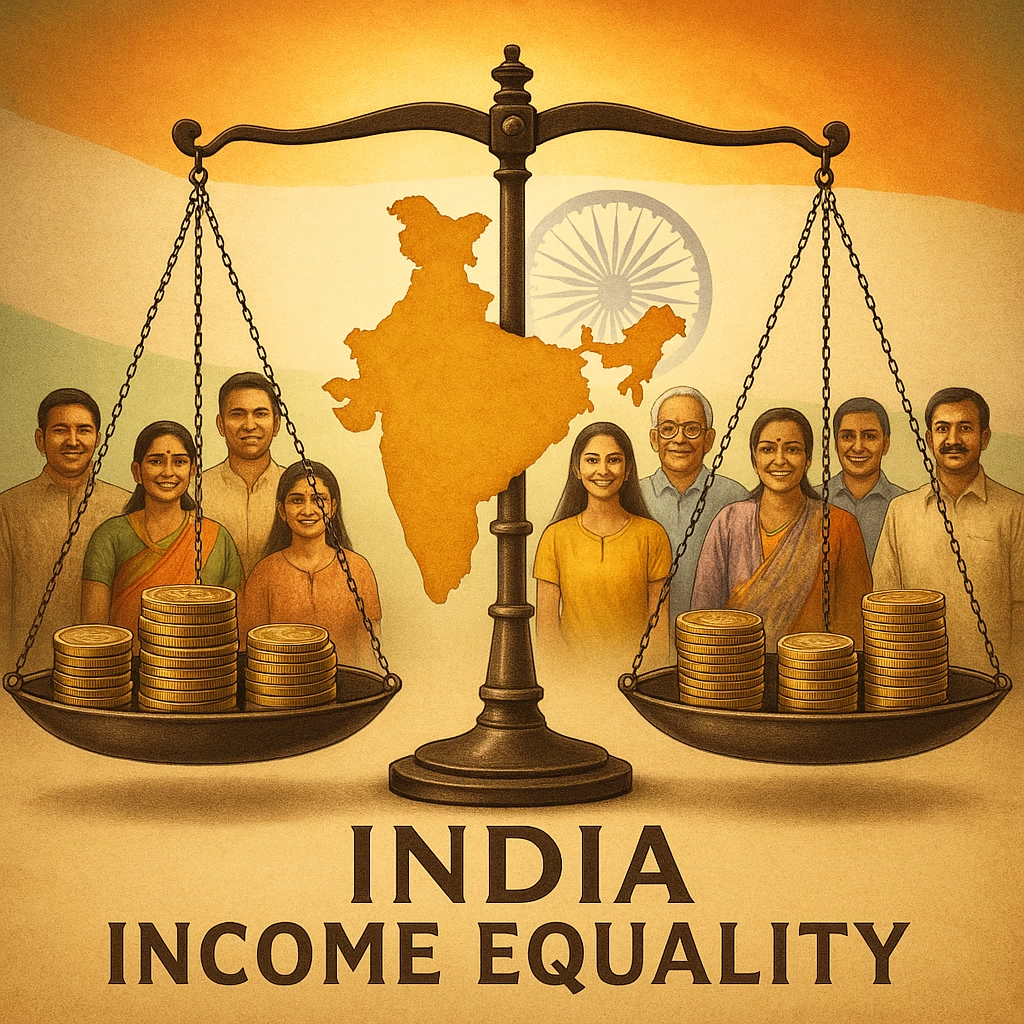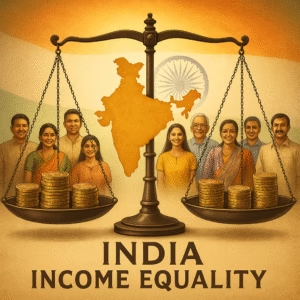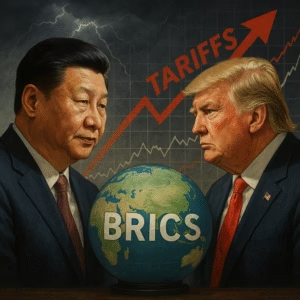
India most equal nation
India Becomes One of the World’s Most Equal Nations, Surpasses US and China | Gini Report 2025

India most equal nation — the phrase that once seemed aspirational is now a statistical and socio-economic reality. According to the World Bank’s Spring 2025 Poverty and Equity Brief, India now ranks as the 4th most income-equal country in the world, boasting a Gini Index of 25.5. This score not only places India ahead of major economies like the United States (41.8) and China (35.7), but also reflects the tremendous progress the country has made over the past decade in narrowing income disparities and uplifting millions from poverty.
📊 What is the Gini Index?
The Gini Index, also known as the Gini Coefficient, is one of the most recognized tools for measuring income inequality within a population. A score of 0 represents perfect equality, while a score of 100 indicates maximum inequality. The index is widely used by economists, governments, and international organizations to assess and compare the income distribution across different countries. India’s impressive score of 25.5 in 2025 marks a significant leap in its socio-economic transformation, reflecting decades of policy-driven poverty alleviation and financial inclusion strategies.
🌐 Where India Stands Globally
India now ranks just behind Slovakia, Slovenia, and Belarus in terms of income equality. These nations, long known for their strong welfare structures and social safety nets, have traditionally led global rankings. India’s entry into this elite group is especially remarkable given its large and diverse population of over 1.4 billion. Achieving such a low Gini score in a country with vast rural-urban divides, multiple income brackets, and complex social structures is both statistically significant and socially transformative.
| Country | Gini Index (2025) | Ranking |
|---|---|---|
| Slovakia | 23.9 | 1st |
| Slovenia | 24.4 | 2nd |
| Belarus | 25.1 | 3rd |
| India | 25.5 | 4th |
| China | 35.7 | 36th |
| United States | 41.8 | 58th |
🚀 Drivers Behind India’s Rise in Equality
India’s improved Gini Index is the result of a sustained and multi-pronged policy approach over the last decade. Several transformative reforms have reshaped India’s economic architecture to be more inclusive and equitable. These include:
- Financial Inclusion via PM Jan Dhan Yojana: Introduced in 2014, this program brought millions of Indians into the formal banking system, allowing the government to deliver subsidies and benefits directly to citizens. Over 500 million accounts have been opened under this scheme, greatly improving access to financial services for the unbanked.
- Aadhaar and Direct Benefit Transfer (DBT): With Aadhaar linking, India created one of the largest digital identity systems in the world. This enabled DBT schemes to ensure welfare benefits reached the intended recipients without leakage or corruption, saving over Rs. 2.2 lakh crore, according to government estimates.
- Ayushman Bharat: India’s flagship health insurance scheme has covered more than 500 million individuals, making healthcare accessible and affordable for low-income households and preventing medical expenses from plunging families into debt.
- Rural Development and Livelihood Programs: MGNREGA, Skill India, and NRLM have provided jobs, skills training, and credit access to rural households, empowering them economically and socially.
- Universalization of Public Distribution System: A reformed PDS has ensured that even the poorest sections of society have access to essential food grains at subsidized rates.
📈 Poverty Reduction on a Historic Scale
India’s success story is incomplete without acknowledging its monumental efforts in poverty reduction. According to World Bank data, India lifted approximately 171 million people out of extreme poverty between 2011 and 2022. The extreme poverty rate dropped from 16.2% to just 2.3% in that period. This progress is among the fastest and most extensive in the modern economic history of any developing nation.
What makes this reduction even more significant is that it occurred despite global shocks like the COVID-19 pandemic, which reversed poverty gains in several countries. India’s continued focus on digital infrastructure, social welfare, and economic resilience allowed it to maintain its momentum during these testing times.
⚠️ Remaining Challenges and Criticisms
While the income equality metrics show improvement, experts caution against interpreting the data as a complete resolution of socio-economic disparities. Several challenges remain:
- Wealth Inequality: Income equality may have improved, but wealth is still heavily concentrated. Oxfam reports indicate that India’s top 1% holds more than 40% of the country’s total wealth.
- Gender Gaps: Women continue to earn less and are underrepresented in formal labor markets. Social and cultural barriers still prevent many women from accessing education and employment opportunities.
- Education and Health Disparities: While public schemes exist, disparities in education quality and healthcare access persist, particularly in remote and tribal areas.
- Urban-Rural Divide: Urban areas continue to enjoy higher incomes and better amenities. Bridging this divide will require focused development strategies at the district and village levels.
📊 India Most Equal Nation : What Experts Are Saying
Several economists and global observers have weighed in on India’s performance:
Dr. Raghuram Rajan remarked, “India’s digital public goods ecosystem has created a level playing field in terms of access. The challenge now is turning access into opportunity.”
Amartya Sen noted, “Equality is not just about income. It’s about access, dignity, and justice. India has taken big steps, but the journey continues.”
Dr. Shanta Devarajan, former World Bank Chief Economist, called India’s policy architecture “the world’s most scalable and secure welfare infrastructure”.
🌟 The Road Ahead: Sustaining Equality Gains
To ensure this progress is sustained and expanded, India must prioritize the following:
- Improved Taxation and Redistribution: Implementing fair and progressive taxation policies that curb loopholes and ensure higher contributions from ultra-high-net-worth individuals.
- Education and Skilling: Investing heavily in public education, teacher training, and industry-aligned skill development will be essential to create equal employment opportunities.
- Women’s Empowerment: Greater investments in women’s health, safety, and education will lead to long-term economic inclusion and gender equality.
- Data-Driven Governance: Leveraging data analytics to track inequality at micro levels and design localized policy responses will become increasingly important.
Stay informed with verified, impactful news and reports only at TrendyIndiaNews.com
About The Author
Discover more from Trendy India News
Subscribe to get the latest posts sent to your email.






